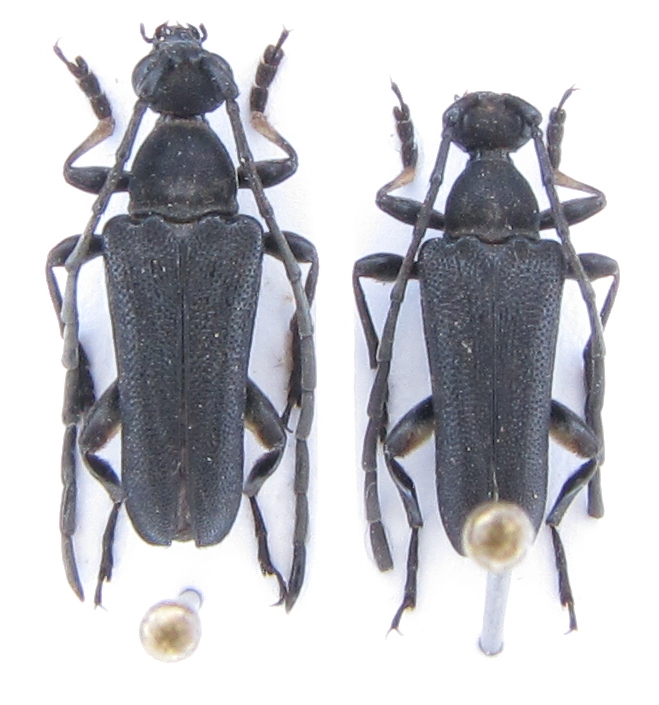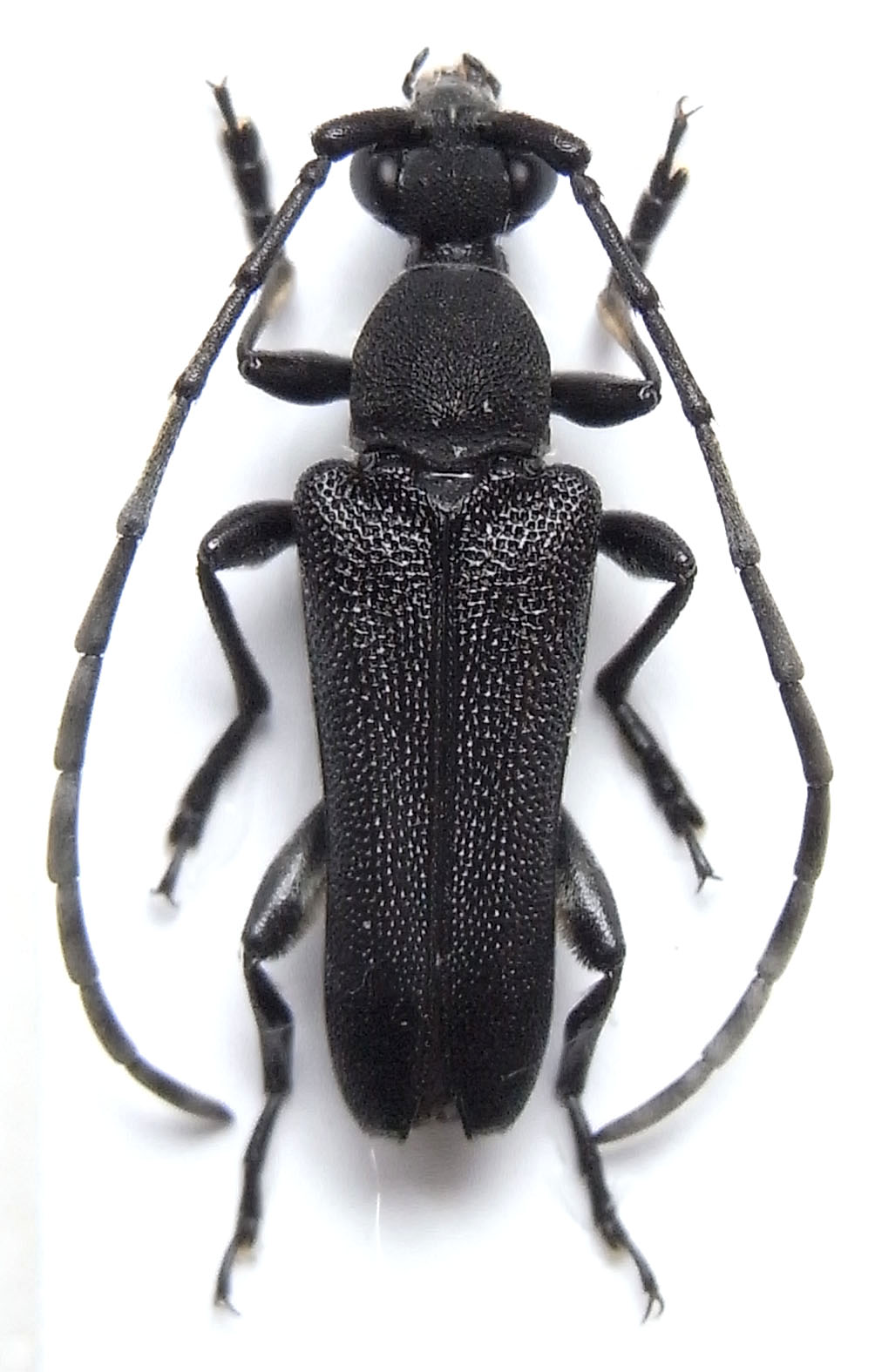| Author |
 Topic Topic  |
|
|
Vitali
Member Rosenbergia
   
Estonia
1001 Posts |
 Posted - 12/11/2012 : 23:03:11 Posted - 12/11/2012 : 23:03:11



|

Males are characterized by short and strong hind legs with dense pubescence on the inner side of femora (better seen in the right specimen photographed under some angle from behind).
Females with simple hind legs.
Elytra are shiny in both sexes. |
Edited by - Xavier on 27/01/2016 00:24:37 |
|
|
Xavier
Scientific Collaborator
    
France
12338 Posts |
 Posted - 13/11/2012 : 06:41:43 Posted - 13/11/2012 : 06:41:43



|
| Here, the same species. |
 |
|
|
Vitali
Member Rosenbergia
   
Estonia
1001 Posts |
 Posted - 13/11/2012 : 20:51:12 Posted - 13/11/2012 : 20:51:12



|
Thank you, Xavier. You might be right.
I’ll accept this identification until I have some differential diagnosis. Extremely dense punctuation with very thin intervals between punctures in pronotum is somewhat confusing in my specimens. The punctuation looks like honeycomb. Besides, the pronotum seems completely matt.
My photo is not very good, but this feature is shown correctly. Maybe the difference is because of sexual dimorphism. There are two males in my photo, while yours seems to be a female. A female in my collection has also a bit shinier pronotum. |
 |
|
|
Francesco
Forum Admin
    
Luxembourg
9511 Posts |
 Posted - 13/11/2012 : 21:26:06 Posted - 13/11/2012 : 21:26:06




|
I have got a male like that, which Xavier has sent me from Laos.
Nonetheless, the description provided by Gressitt (1951) mentioned a "body tinged with bluish" while my specimen is completely opaque.
Moreover, he did not mention this particular femoral pubescence.
Are they really the same species? |
 |
|
|
Xavier
Scientific Collaborator
    
France
12338 Posts |
 Posted - 13/11/2012 : 21:51:52 Posted - 13/11/2012 : 21:51:52



|
That's true, and threre is not bluish color on my specimens. I think also that it's another species.
Black with last antenomeres white or greyish, it could be A. dissimilis?...
but I will check Holzschuh descriptions from this area. |
 |
|
|
Xavier
Scientific Collaborator
    
France
12338 Posts |
 Posted - 13/11/2012 : 22:24:30 Posted - 13/11/2012 : 22:24:30



|

I add one more picture of a male (Hua Phan, nord Laos). |
 |
|
|
horshehden
Member Purpuricenus
 
Czech Republic
424 Posts |
 Posted - 13/11/2012 : 22:50:07 Posted - 13/11/2012 : 22:50:07



|
| In most cases, you can find there Anoploderomorpha abstrusa Holzschuh, 1989. |
 |
|
|
Xavier
Scientific Collaborator
    
France
12338 Posts |
 Posted - 14/11/2012 : 16:04:50 Posted - 14/11/2012 : 16:04:50



|
Thanks a lot.
I tried to translate a part of the description (hard for me, German language), and with "the more granular base of the elytra" it seems working.
Could you have a look on it, Francesco ? |
 |
|
|
horshehden
Member Purpuricenus
 
Czech Republic
424 Posts |
 Posted - 14/11/2012 : 19:50:23 Posted - 14/11/2012 : 19:50:23



|
| Try to check the legs and overall appearance of the body. |
 |
|
|
Francesco
Forum Admin
    
Luxembourg
9511 Posts |
 Posted - 14/11/2012 : 22:42:14 Posted - 14/11/2012 : 22:42:14




|
| Xavier... je ne crois pas d'avoir cet article... |
 |
|
|
Francesco
Forum Admin
    
Luxembourg
9511 Posts |
 Posted - 15/11/2012 : 09:19:40 Posted - 15/11/2012 : 09:19:40




|
| Ok, c'est astrusa: la description ne laisse aucune doute: "durch die eigenartige Bildung der Hinterbeine beim #9794; eine sehr ausgezeichnete Art" (= une espèce très distinguée pour la conformation unique des pattes postérieures du #9794;). |
 |
|
|
Vitali
Member Rosenbergia
   
Estonia
1001 Posts |
 Posted - 15/11/2012 : 10:30:45 Posted - 15/11/2012 : 10:30:45



|
Thanks to all!
A difficult genus, but a great example of collective work. |
 |
|
|
Xavier
Scientific Collaborator
    
France
12338 Posts |
 Posted - 15/11/2012 : 20:19:07 Posted - 15/11/2012 : 20:19:07



|
Yes. The determination of these species is nice, but exchanges too.
Thanks to everybody  |
 |
|
| |
 Topic Topic  |
|


